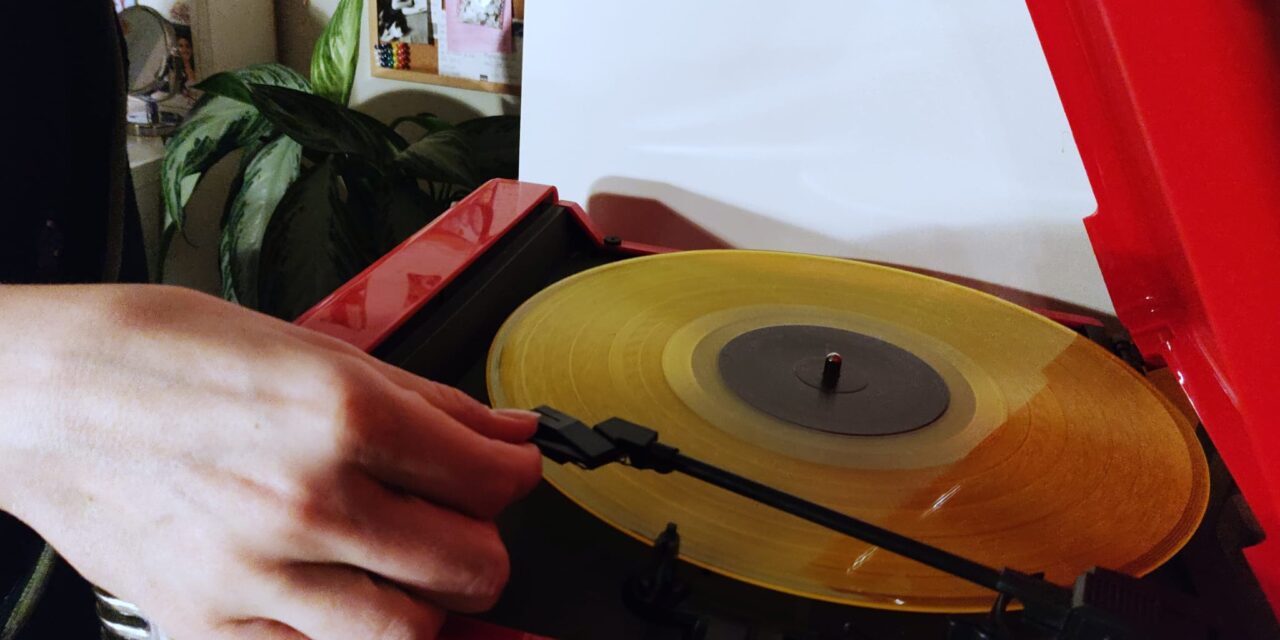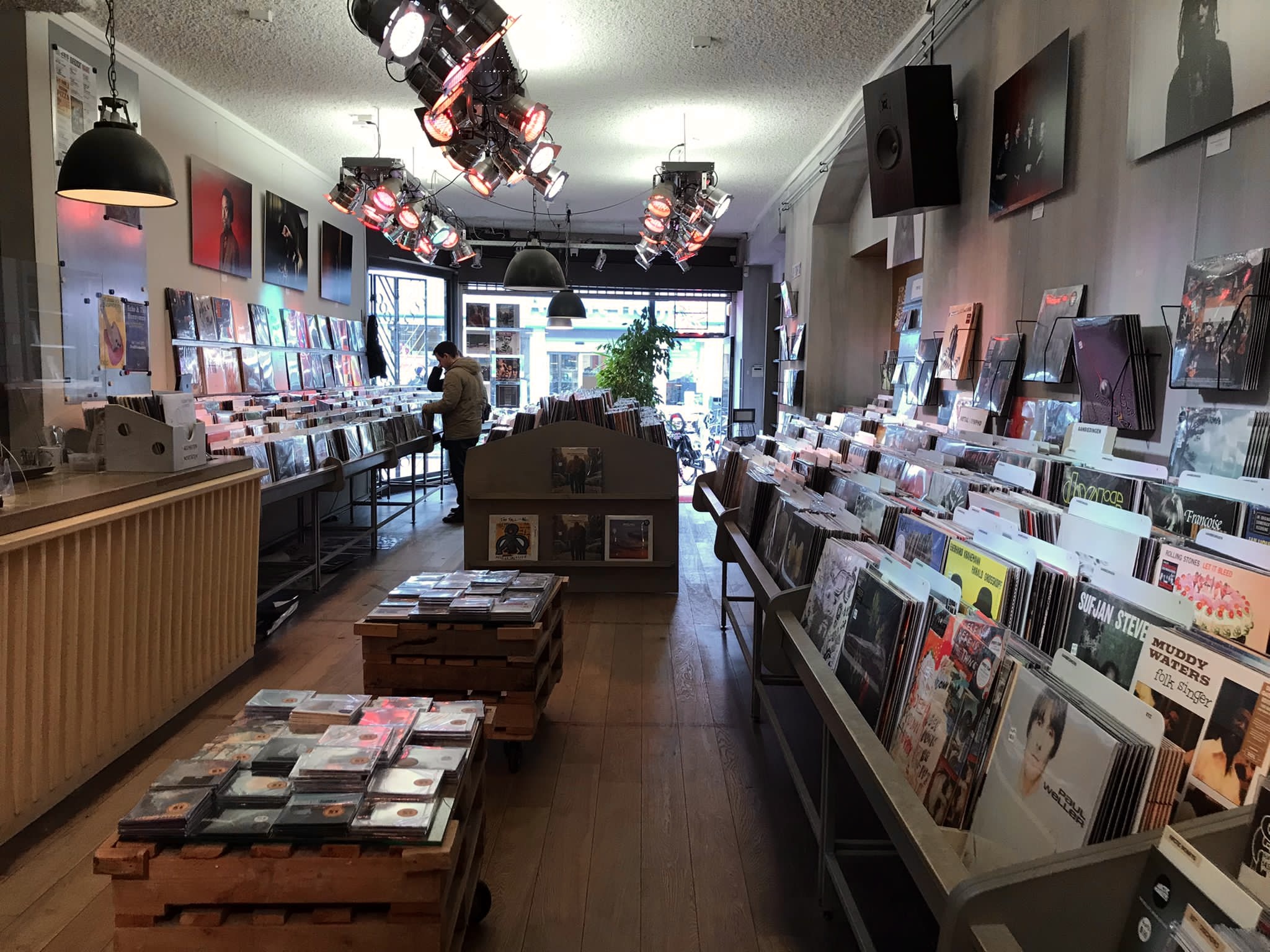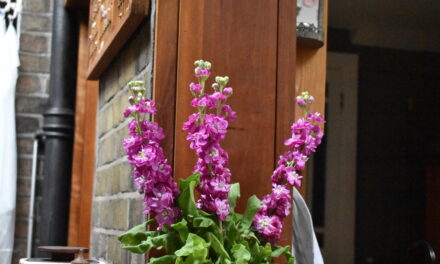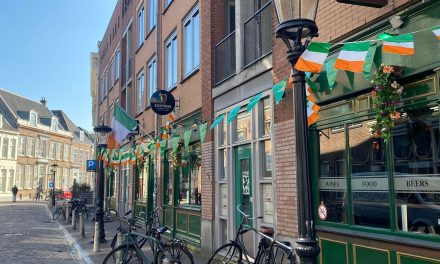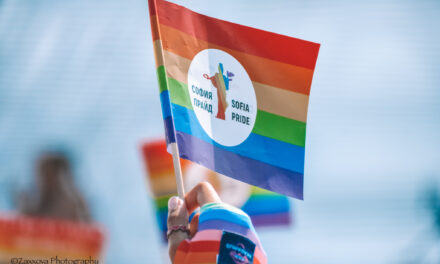We know by now that vinyl records have been and are still making a comeback. In 2021 music fans spent more money on records than on cd’s. For a medium that has been around since the 1930s it’s seen a lot of innovations. One of those: colored records.
Colored records have been around for almost just as long as records themselves. Back when records didn’t have the fancy printed covers that we know by now, they were sold in simple sleeves. Colors were a great way to stick out in the crowd. Where in the early 1900’s mostly brown and blue tints were used by record labels to distinguish their products from the rest, any record lover knows that nowadays there’s a great variety of color combinations and hue’s being used. Willem de Vries, co-owner of Plato, the biggest record store in Utrecht, states that colored vinyl records are mostly still “a marketing thing”.
“The interest in colored records has always been there, but since the popularity for records grew a lot again about 6 years ago, we’ve been seeing a lot of colored re-releases and new releases as well. The colored versions are limited edition, that’s what triggers people to pre-order them and get them before they’re sold out. The more special the record will be, the more people will want to buy it.” He goes on to explain that there’s different fanbases who buy the colored records. “Let’s say a new colored Dua Lipa record is being released, there will generally be younger fans wanting to buy it. Whereas when there’s a Springsteen re-release, it will be more of a collector’s item.”
So, what is the reason for a music fan to buy a colored record? Koen Engelen, a 22 year old record collector and music enthusiast with a growing collection of colored records, found out about the existence of colored records by accident when he bought one of his first sets of records. “I’d ordered five records and suddenly one of them was blue and I was like ‘whoa is that also possible?’ And that’s when it all started for me.” He goes on to explain that for him it’s about the entire experience. “For me beautiful part of listening to music on a record is to be able to physically hold it. The difference from digital music is that there’s a more visual presentation included with records and the color of a record contributes to the entire presentation of an album. Especially when there’s multiple editions coming out, then you can choose how you think the music will be experienced the best way.”
The vinyl experience Koen describes, seems to be special to more record fans, including Willem. “Listening to music on a record is always an experience. Of course I hope that the music on the record is still the biggest motivation for someone to buy it, but people are definitely triggered more easily to buy a record when it’s limited edition.” He says, standing behind the counter of the music filled store. He states very clearly that he’d never buy a record just for its color, but that he’ll sometimes make an exception for transparent records. “They sound amazing and look great too, so sometimes I do get motivated to get one of them. And when I pull one of those clear editions out of its sleeve, it really does look very cool.”
Koen agrees that aesthetics are important but that the music itself is always most relevant. “I only buy records from music that I really like but if I have a choice between multiple versions, I definitely focus on looks.” If he had the choice between buying a black record or a colored one he’d choose color. “It definitely adds something. When listening to a record you sit down for it more so than you would when listening to music in another way. So, while listening you also have something to look at. Black records are still nice as well and give sort of a vintage feeling, but if you can give that a modern twist with colors or a super strange design, that’s just great.”
